If you want to rank at the top spots in Google, then you need to offer the most relevant, valuable content to a user’s query. This is what search intent is all about.
Search intent is the goal a user has when they make an online search. If you’re able to accurately target this intent in your web page, Google will prioritise your content for the right search terms. This means you get better rankings and more traffic.
Understanding search intent is a fundamental part of any SEO strategy. Without this, you’ll be shooting in the dark. If you don’t understand search intent, you probably won’t see any decent results from the content you publish.
In this guide, we take a deep dive into search and keyword intent. We cover what it is, the different types of search intent, and how you can optimise your content for better keyword intent performance.
What is Search Intent?
Search intent refers to the overall purpose of running an online search. What does a user want to find out when they make a specific search query?
Whenever someone searches for something online, they want to access certain information. Maybe they want to answer a question, discover a website, find a product, or learn how to do something. These are all different examples of search intent.
Search intent and keyword intent are critical for successful SEO. This is because search engines are smart, and they want to provide the best possible answers to people’s search queries.
The best answers are always the most relevant ones. The most relevant answers get the highest rankings.
When you produce keyword-optimised content, you need to make sure it addresses the intent that a user has when they search for the keyword. If your content is irrelevant, it won’t rank well and it will result in page bounces.
So, when you publish content and optimise it for SEO, you need to make sure it’s the right kind of content for the keyword you’re targeting. This could be the type of information you display, what topics your content covers, and how your content is laid out.
Why is Search Intent Important?
Google’s primary purpose is to provide the most relevant information to your search query.
This is the whole point of any search engine. The reason so many people use Google is that it does this so well.
If you want your website to perform well in the SERPs, then addressing search intent properly should be your top goal.
Google also takes search intent very seriously. Google’s Quality Rater Guidelines go into detail about search intent, really driving home the fact that search intent is a critical ranking factor.
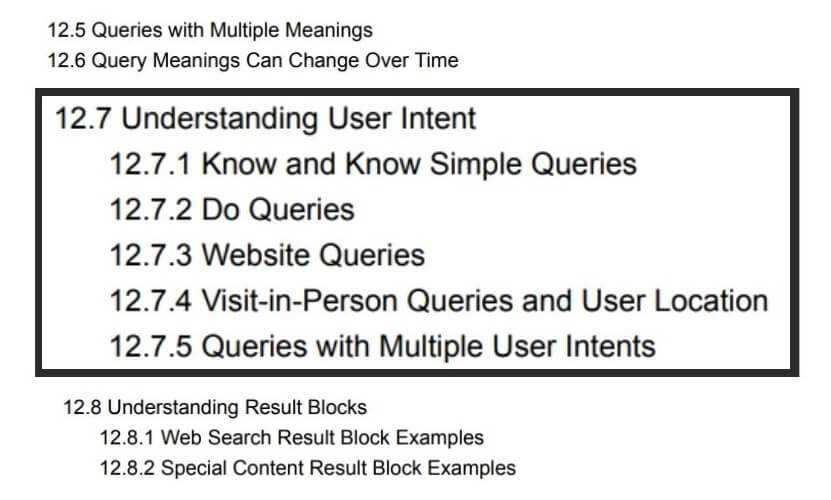
So if your page doesn’t target the right search intent, it’s not going to rank. It’s that simple.
Beyond this, search intent also forms a key part of your customer journey and marketing funnel.
When you create an SEO content plan, your goal is to target the right people with the right content at the right stage of their buying journey. If you don’t get search intent right, then you won’t be able to pull this off.
Missing the mark with search intent means the organic traffic your website attracts won’t be relevant to the marketing journey you want users to take.
In short, search intent is critical for SEO. It determines whether your pages will rank and whether you will attract qualified traffic to those pages.
4 Types of Search Intent
To understand search intent, you’ll need to have an understanding of the four different types of search intent that exist.
When you publish new content on your website, you will be targeting one of these different types of intent.
1. Informational Intent
First, there’s informational intent. This is one of the most popular types of search intent, as the majority of online searches involve people looking for information. This could be any kind of information related to a specific question or topic.
Users might want to find out about the weather, they might look for a recipe, want to learn about history, figure out why their child is sick, and so on. These are all examples of informational intent.
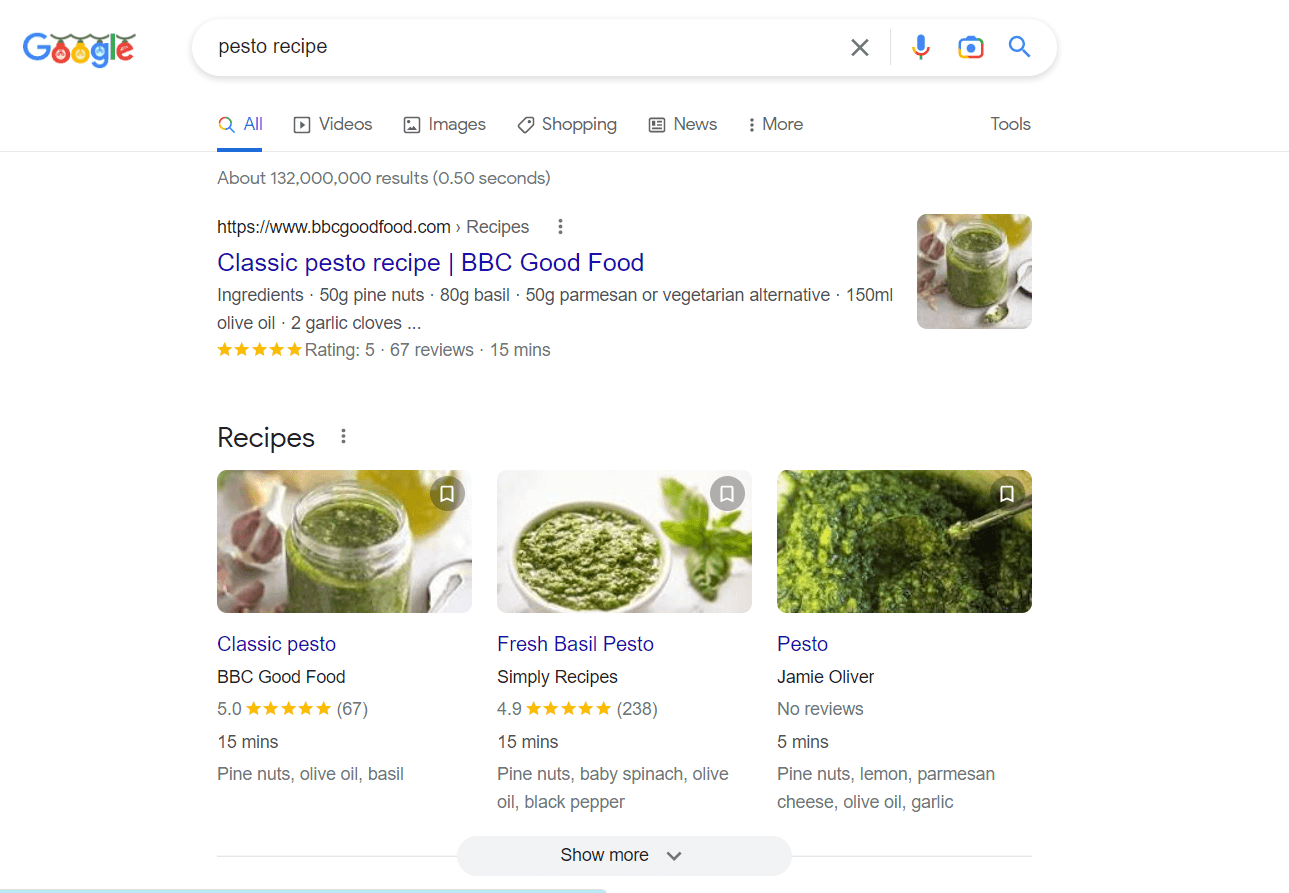
As you may know, Google is pretty advanced when it comes to understanding informational intent. In the example above, it’s very clear what kind of intent the search is about – it wants to discover a recipe for pesto.
So, Google doesn’t only display regular indexed pages for a pesto recipe, but it also displays rich recipe results. As soon as you perform this search, you are faced with a bunch of different pesto recipe options.
In this case, Google addresses search intent perfectly. Although, the search intent is also very clear in the search term.
If you use a more vague search term, like “pesto”, the intent could become a bit more confusing.
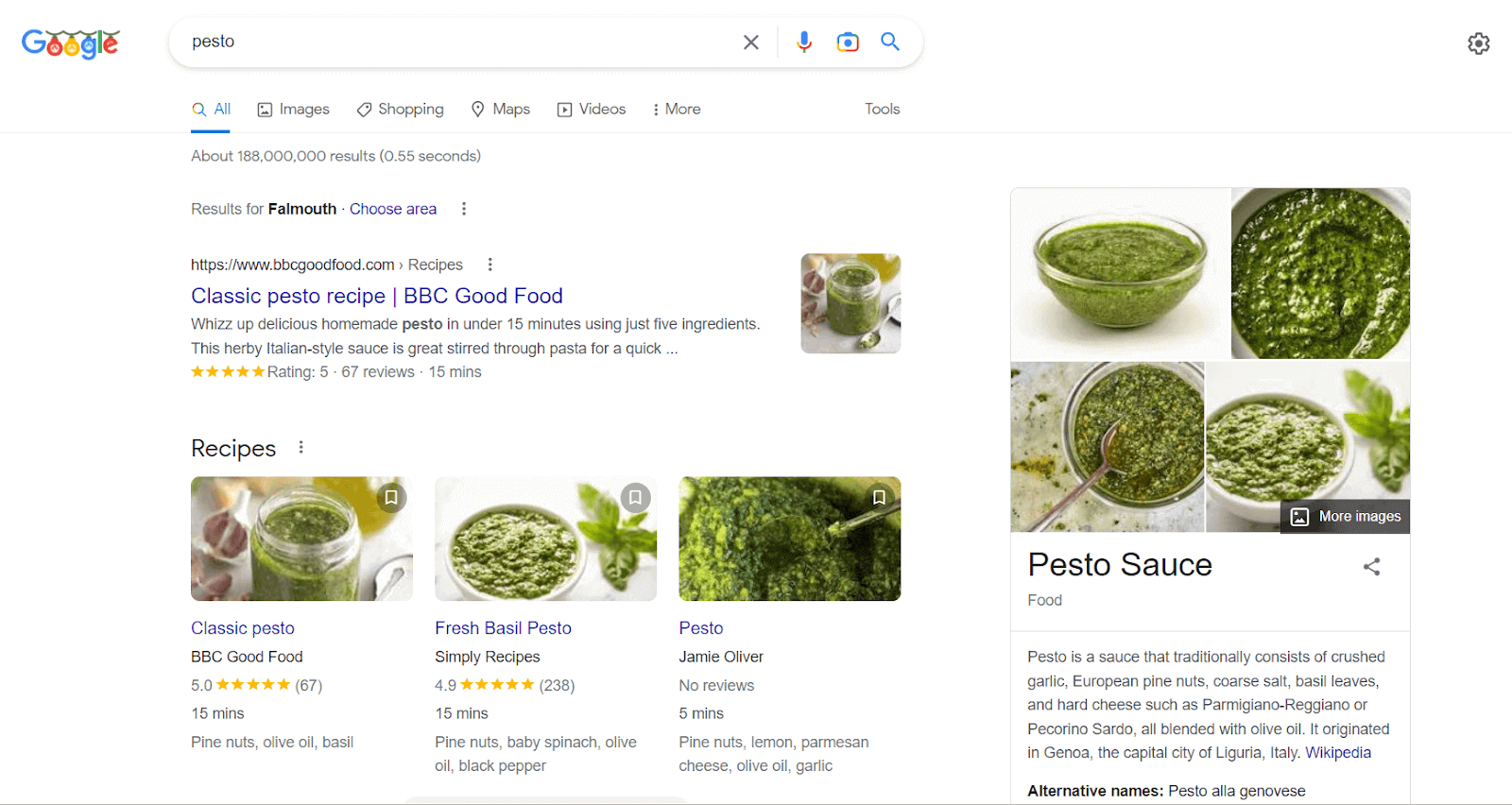
It’s still informational intent, but it’s not as specific as asking for a recipe. In this case, you might want to know what pesto is, where it comes from, how it’s made, or where you can buy it.
So, Google addresses all of this by providing an information block on the right explaining what pesto is. It also has more general search results below the recipes, like a Wikipedia page and restaurant websites.
Google is smart, and it understands exactly what kind of information people want to discover when they use a certain search term. It’s important that you also understand this when you optimise your website for certain keywords.
2. Navigational Intent
Navigational intent is when a user wants to find and visit a specific website. Instead of searching for a general answer to their query, they have a very clear direction they want to take.
Generally, this will involve searching for the website’s name directly in order to find a link to its homepage.
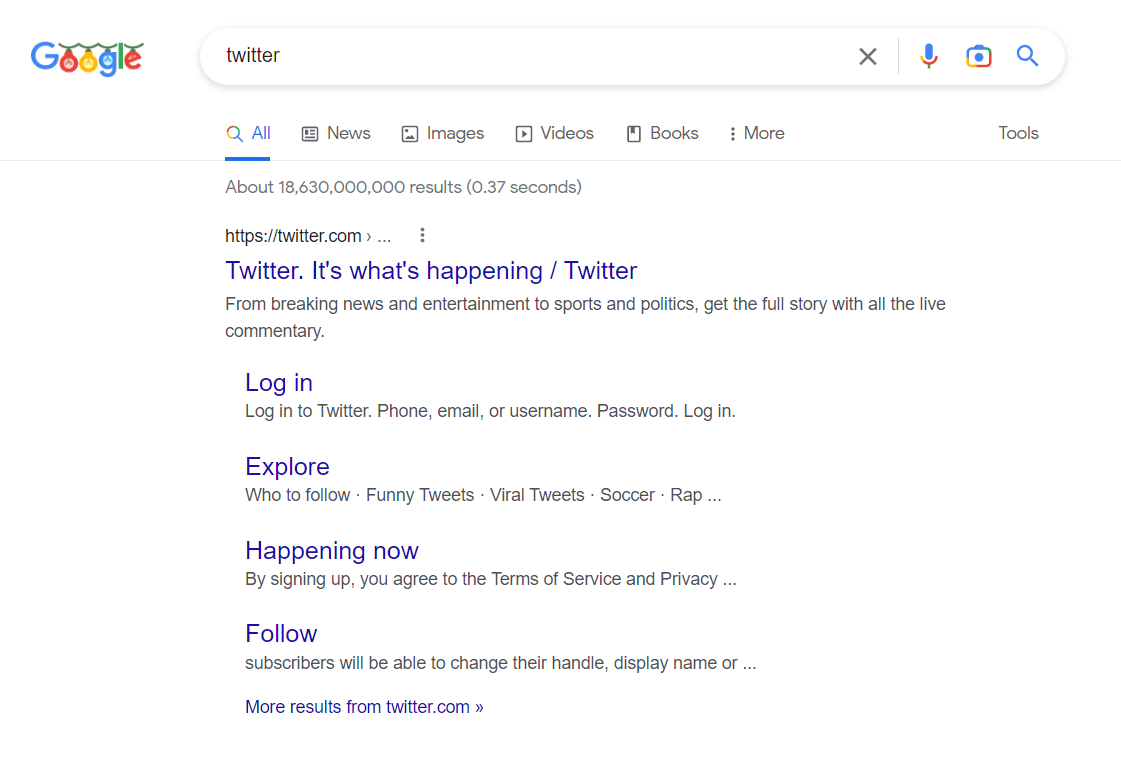
When someone has a navigational intent query, there’s really only one clear path they’re looking for.
3. Transactional Intent
People are always looking for things to buy online. Transactional intent refers to any searches where users are looking to make a purchase.
This is one of the most valuable forms of search intent, as users are actively looking to spend money. If you can get your website ranking for the right transactional intent keywords, then you could have some great opportunities to make more sales.
The most basic example of transactional inter is when a user searches for a product directly.
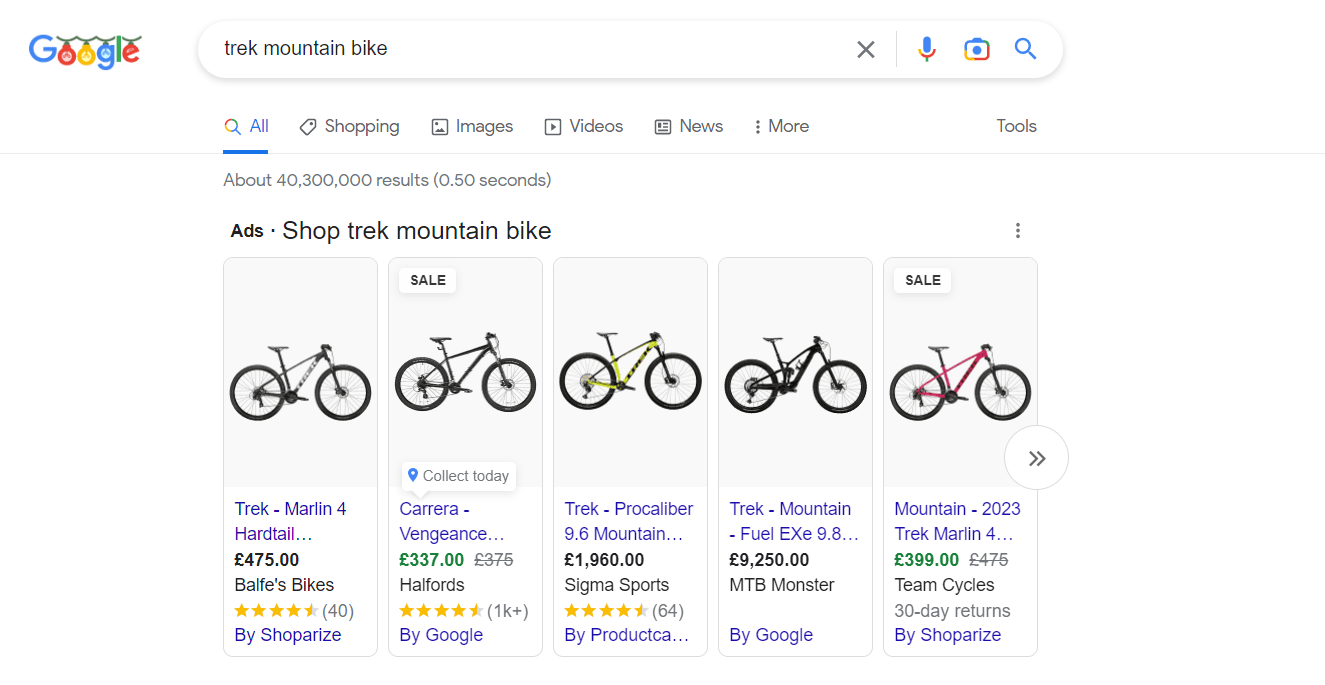
You’ll notice that rich results display again – this time for products. This makes it easy for the user to find the exact product they need and purchase it straight away.
Transactional intent is very clear and focused – the user knows what they want and they’re ready to make a purchase. This is a type of search intent that sits at the very bottom of the funnel.
You can take advantage of transactional intent by optimising your product page listings. Try to use schema markup to apply rich product results in the SERPs.
Things like star ratings, positive reviews, and visible pricing can help you increase clicks and conversions after a transactional intent search. This is especially important if the same product can be found on your website and other websites.
4. Commercial Investigation
Commercial investigation is the type of search intent that comes before transactional intent. The user is actively searching for a new product and they know they want to make a purchase. However, they haven’t decided what product is right for them yet.
Here’s an example of commercial investigation:
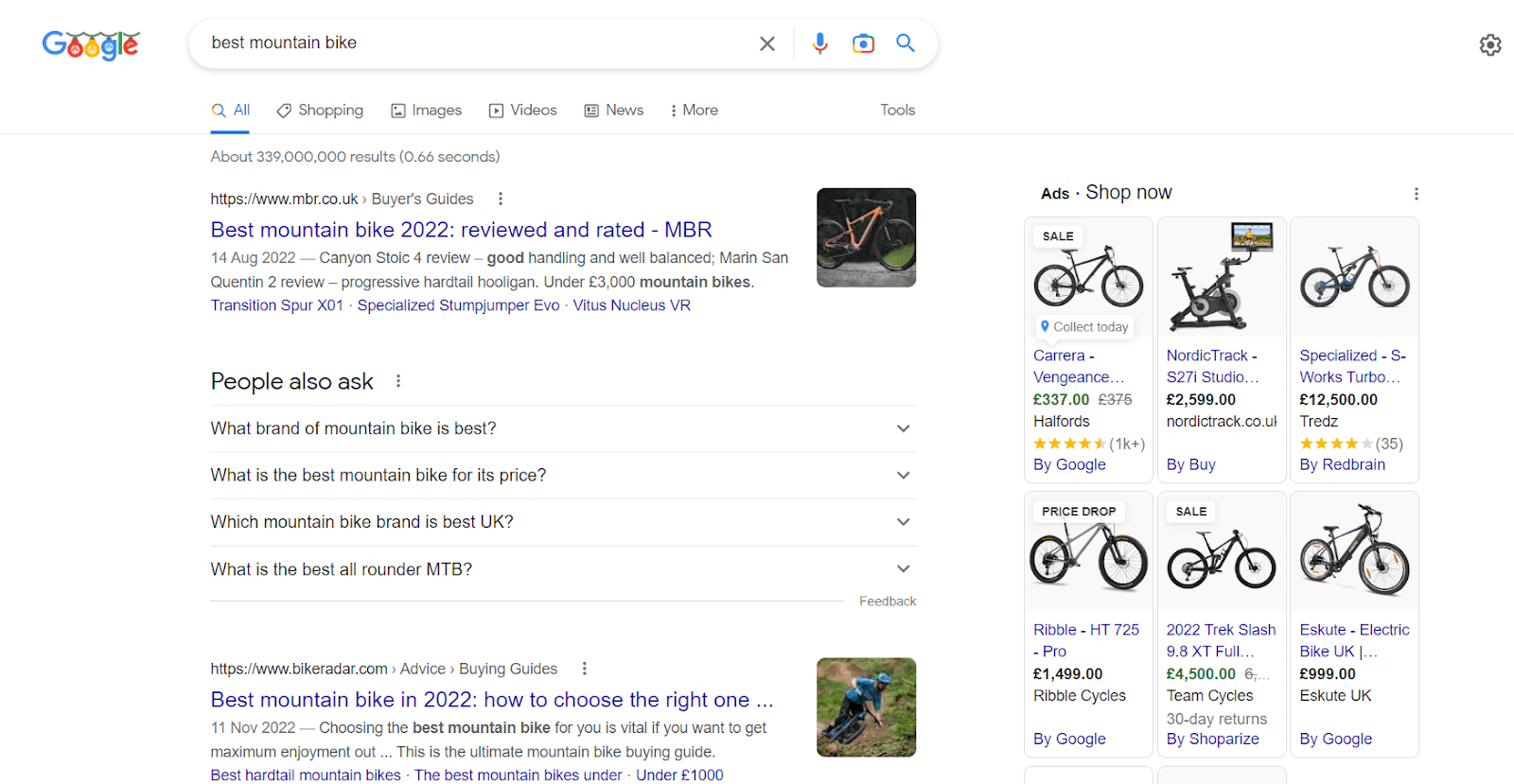
In this case, the user is still clearly looking to purchase a mountain bike, so they have transactional intent. At the same time, this is mixed with informational intent as they still need to do their research into mountain bikes before they make a purchase.
As you can see, the search results include both shoppable products as well as informative articles.
These are some of the most valuable keywords to target, as it gives you a chance to convince keen buyers that your product is the best choice for them. Unlike transactional intent, the user still needs to make up their mind.
It’s important that businesses target commercial investigation intent keywords as part of their SEO strategy. Get it right, and you’ll be able to send a lot of traffic to your website that is ready to make a purchase.
You could achieve this by posting product reviews, product roundups, guides to why certain products are important, and so on. In these cases, the user isn’t looking directly for a product, but they do clearly have an intention of buying one. They just need a little bit more information – which you can provide.
Understanding Keyword Intent
Now that we’ve covered the four main types of search intent, there’s one more thing you need to understand: keyword intent.
Keyword intent refers to the specific words that people use in their search terms that distinguish the kind of search intent the keyword offers.
You want to target the main keyword “email marketing”. The search intent for this would be very broad, and it would be a very difficult keyword to rank for. By refining this keyword with the right additional words, you’ll be able to create a much more targeted keyword.
For example, you could say “why email marketing” or “how to do email marketing”. These keywords have very different, but crystal clear, keyword intent.
If you see words like “buy” and “for sale” in your keyword, then you know it has a transactional intent. If you see words like “how to” or “guide” in your keyword, then it has informational intent.
Understanding this can help you achieve some important things in SEO.
First of all, it makes your content more relevant to the specific search query. As we’ve already established, this is essential for gaining the right rankings.
Second, clear keyword intent will make it easier to rank for high-value keywords. There’s no point in ranking for a very high-volume keyword that delivers a lot of traffic if that traffic is not qualified for your business.
For example, you might sell ice cream machines. If you rank at position one for “ice cream”, you will probably gain a lot of traffic. However, the search intent for “ice cream” is vague, and very few people looking for it are probably interested in purchasing an ice cream machine.
If you rank for “best ice cream machine”, then you’ll likely attract less traffic, but your traffic will be more relevant. This will help you increase conversions (sales) from your traffic and decrease your page bounces.
So, even the smallest variations in your keywords can totally change the keyword intent. When performing keyword research and putting together your SEO content plan, it’s important to utilise a variation of short and long keywords. This helps you target high-intent and high-volume keywords.
How to Optimise Your Content for Search Intent
The whole point of understanding search and keyword intent is so that you can optimise your content for it.
If you get search intent right on the money, you’ll instantly improve your chances of ranking. Not only that, but you’ll be able to attract a lot more qualified, and valuable, traffic.
Optimising your pages for search intent will help you develop a more well-rounded SEO strategy, and it will help you meet your website visitors at the right stages of their buying journey.
Let’s explore some of the tactics you can use to achieve this.
1. Understand the Buying Journey
Before even planning out your SEO content and keyword strategy, it’s important that you know what steps a customer takes in their buying journey. These are the steps involved in discovering your brand through to becoming a paying customer.
The buying journey generally involves three stages:
- Awareness: When a person discovers your brand
- Consideration: When they learn about your brand and develop trust
- Conversion: When they decide to become a customer
For your SEO strategy to be successful, you need to understand the specific search intent that users have at each stage of their buying journey. Your goal is to address each stage with the right content.
For example, the awareness stage is all about targeting high-level keywords, generally keywords with informational intent. If you direct someone to a product page during this stage, they won’t be interested in making a purchase. However, people in the conversion stage have high transactional intent, so they can be directed to product pages.
Once you understand the buyer journey and understand how this journey relates to your website, you can start to refine your keyword strategy based on intent. This helps you create more relevant content for the search query.
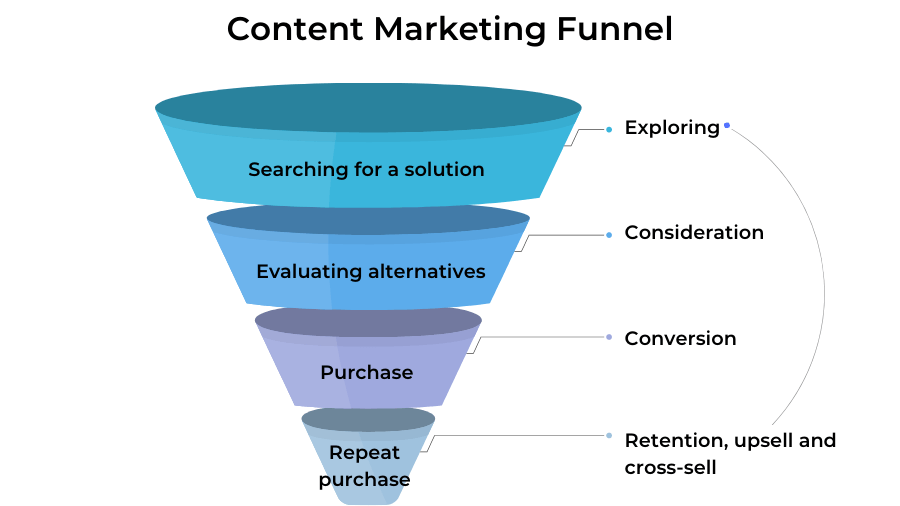
2. Align Your Content With the “Three C’s”
Once you have chosen your keyword and understand its intent, the next stage is to make sure your content aligns with the three C’s related to this keyword. These are:
- Content type
- Content format
- Content angle
The content type refers to the specific type of content you publish. This could be a landing page content, a blog post, a product page, or more. Do some research in the SERPs to see what content types are ranking best and are most relevant for your keyword.
Then there’s the content format. This refers to how the top-ranking pages come across. You could format your page as a “how to” guide, a step-by-step guide, a list post, a comparison review, or more. Whatever the case, make sure the format of your content matches the keyword intent and SERPs.
Content angle is all about the unique selling point that your content takes. What are you offering visitors? Make sure your content takes the right angle that will attract visitors and make sense to their search queries.
For example, you could be targeting the keyword “bread recipe”. There are many different angles you could take here, such as:
- Wholewheat bread recipe
- Fast and easy bread recipe
- Light and fluffy bread recipe
- Gluten-free bread recipe
And more. Pay attention to the SERPs and what type of content angles perform well. You’ll want yours to be relevant, but also to stand apart from the competition.

3. Analyse the SERPs
The most effective way to understand search intent is to simply research this in the SERPs.
Google your target keyword and analyse the top-ranking pages. Pay attention to what kind of content these pages include, how it’s formatted, what topics are covered, and how the content answers and addresses certain information.
You can also look at the “People also ask” box in the SERP to give you more ideas for your content to cover. These ideas are all relevant to your search intent.
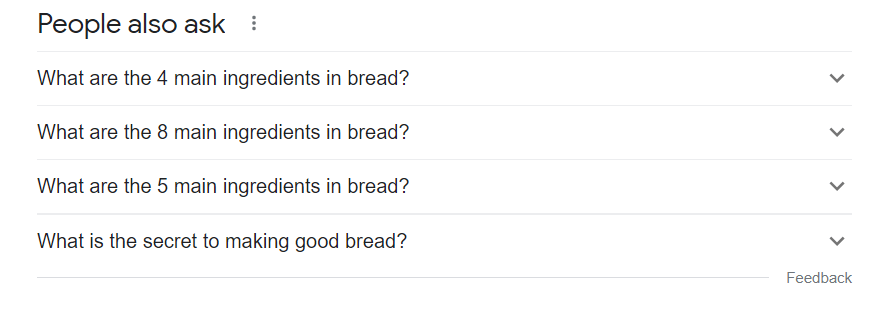
If there are videos in the SERP, watch these and pay attention to what information the videos cover.
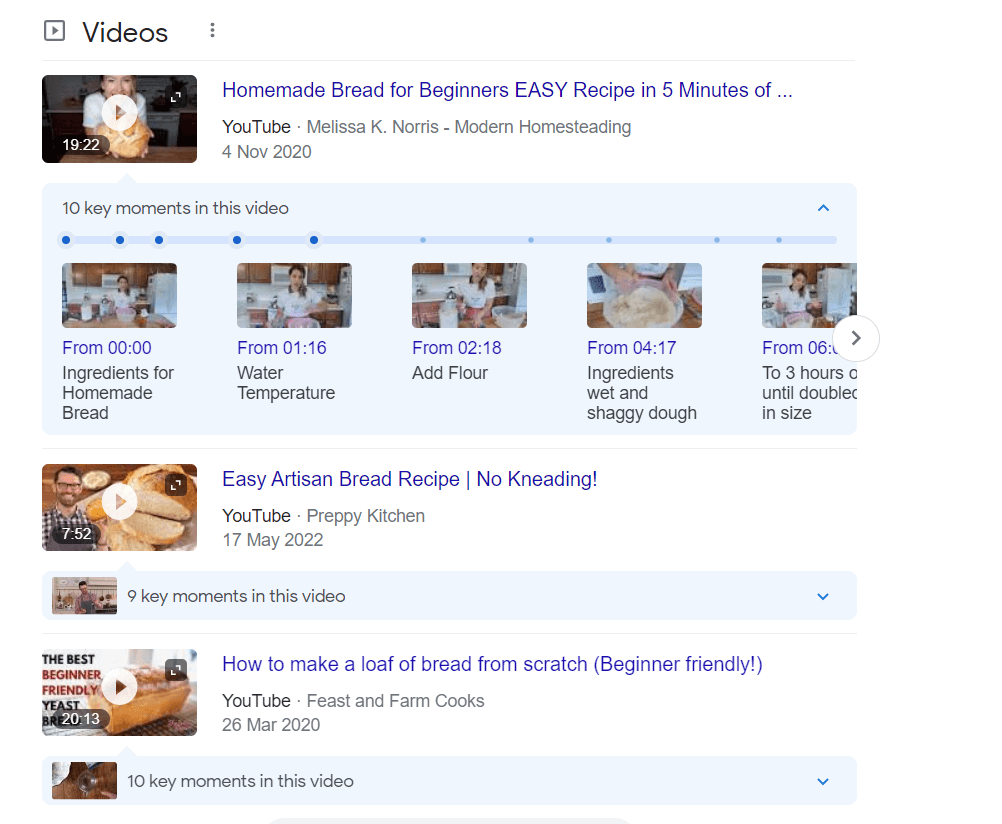
All of this provides valuable insights into what kind of search intent your content should include.
Visit all the top-ranking pages and pay attention to what content they include, Make sure your content has search intent that aligns with this and can compete with it.
4. Understand Your Page’s Search Intent With Search Console
After you have published web pages, it’s always a good idea to follow up on them and make sure they’re properly optimised for search intent. Google Search Console is one of the best tools for doing this.
Go into Search Console and create a report about a specific page on your website, including the search terms that the page is ranking for.
Under the “Queries” report, you’ll be able to see what specific queries are driving traffic to the page.
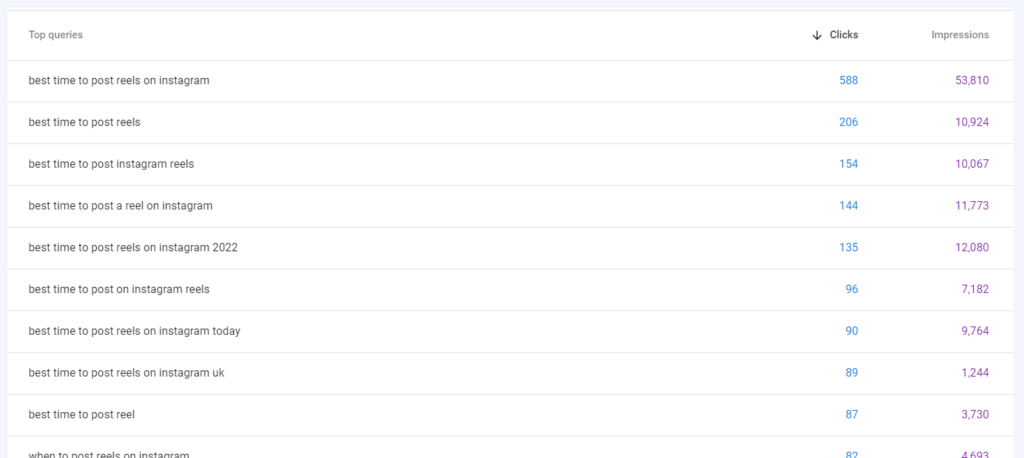
Now you have a clear insight into what search terms, and intent, are driving people to your page. You can then optimise your page to make sure that it properly matches the search intent.
This could involve being more clear about certain information, answering new questions in your content, adding new headings, and more.
5. Use SEO Tools
SEO tools exist to offer you more data about keywords and your website performance. This can be very useful when you optimise your pages for search intent.
For example, you could use Ahrefs to check “SERP Reliability”. This is basically a report that reveals the ranking history of your target keyword to understand how stable it has been and how consistent the search intent is. Here’s an example of a very stable keyword:
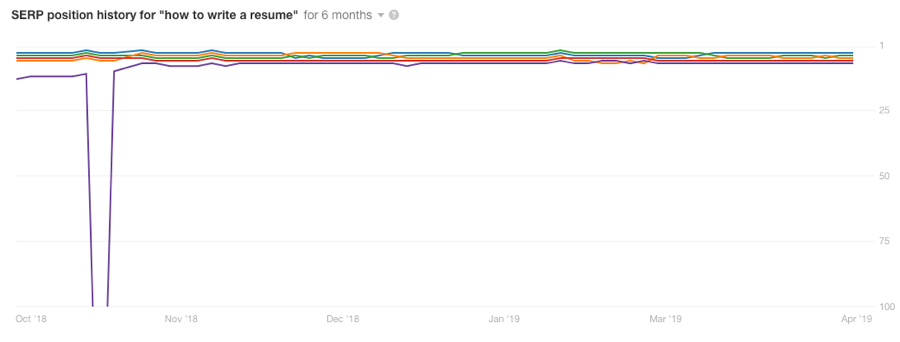
Image source: Ahrefs
In this case, it’s a good keyword to target with very clear intent, because there have been little to no changes in the SERPs. If there is a lot of fluctuation in the rankings, then the search intent could be pretty unclear. This could make it difficult to accurately target that keyword.
You could also use a tool like Ahrefs to run a content gap analysis. This is when you analyse different domains (of your competitors) and compare them to your own domain to discover keyword “gaps”, or opportunities that your site is not ranking for.
You can analyse the available keywords in the report to understand the kind of intent people have when visiting your competitors’ sites. You can also use this information to understand what angles your content might be missing.
Incorporating these keyword ideas into your SEO strategy can help you create more highly targeted content that better matches the relevant search intent of your target audience.
Summary
The keywords you target are only valuable if their search intent aligns with your brand and your target audience’s journey. Understanding this search intent is critical if you want to improve your rankings in the SERPs and attract more relevant traffic to your website.
Follow the strategies above and carefully analyse and understand keyword intent before you start publishing content. This is one of the most important aspects when it comes to creating quality, targeted content – which is vital for success in SEO.
